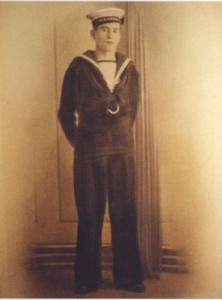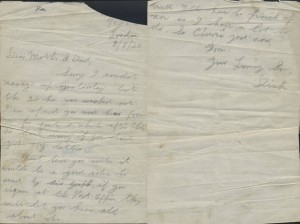In 1932 and 1947, every 11 year old child in Scotland was given an intelligence test*. This fact is referred to throughout the blog. Its the reason Thomson was famous (he designed the test), it was unique (no equivalent exists anywhere else in the world), and it was done on a huge scale (87, 498 children were tested in the first Scottish Mental Survey, and 70,805 in the second).
For over a decade, Professor Ian Deary and his team have used the results of the tests in Lothian Birth Cohorts 1921 and 1936 to explore why some individuals’ cognitive abilities decline more than others – vital and far reaching research in an increasingly ageing population. Hundreds of people given the intelligence test as a child have participated in the follow on studies, which have explored their cognitive skills, their physical well being, and their lives.
At the very heart of all this data are the people themselves, and what the numbers given in the beautifully neat test ledgers don’t tell us. Deary and his colleagues have previously secured funding for author Ann Lingard to tell the Lothian Birth Cohort’s stories through words, artist Fionna Carlisle through paint, and photographer Linda Kosciewicz-Fleming through the lens.
One individual who participated in the 1932 survey, but who was unable to tell his story, was Deary’s Uncle, Richard Deary.
Richard Deary was the son of a miner, and lived with his parents and five siblings
in a one-bedroom miners’ terraced cottage. The family had the most basic of education – Richard would leave school at the age of 14. He, like the thousands of other school pupils who sat the test, was never told his results. He probably never gave them a second thought, and went on to become a miner like his Father. His IQ was an impressive 120.
As an adult, Richard found himself in the midst of World War II:
In the last letter he sent to his parents, he tries to alleviate his parent’s worry, and informs them about a new fangled thing called ‘air graphs’. Two acts of kindness universal from children to their parents the world over. He ends the letter with a ‘cheerio’, and signs ‘your loving son’. Richard died aged 21 when his submarine struck a mine in the Mediterranean Sea 2 months later.
On lecturing at the McEwan Hall on the centenary of the psychology department in November 2006, Deary was presented with this rather wonderful poem by poet Michael Davenport, scribed as he listened to Richard’s story:
A PORTRAIT BY NUMBERS
27.10.2006: a psychologist speaks
of intelligence quotients, cognitive differences,
the Scottish Mental Survey 1932.
Using Powerpoint he illustrates,
shows details from a ledger of the time.
He highlights one boy, Richard,
born 4.4.1921:
number 4 in a class list,
IQ 120 on the Moray House Test.
2.8.1942: Richard’s letter
describes his submarine the ‘Talisman’.
He asks his parents not to worry
if they do not often hear from him
and finishes: ‘Your Loving Son.’
10.9.1942: the ‘Talisman’
leaves Gibraltar reports
a U-boat 5 days later.
18.9.1942: Richard dies at sea,
presumed mined off Sicily.
He’s 21, his navy number:
30938
His nephew, the psychologist, describes
follow-ups of 1930’s survey scores:
correlations with rank and fate in war;
effects of illness, ageing, on the mental skills
of those who still live on.
And with a quiet love
he has included Richard
in this journey of discovery,
his numbers, dates, transmuted
into an elegy.
Michael Davenport
That both history and science are fundamentally about people becomes obvious when looking at a story like Richard’s – or any of the cohorts who shared their lives with Deary and his team. Their stories may not be unusual, but they are all unique, and they allow us to gain some understanding of the humanity behind the numbers – vital if the significance of history and science are to be conveyed to those of us who don’t know much about either!
Every effort has been made to contact Michael Davenport before reproducing his poetry. If there are any objections to this being re-produced in whole or in part, contact Project Archivist, Emma Anthony (Emma.Anthony@ed.ac.uk) who will remove it from the blog.

